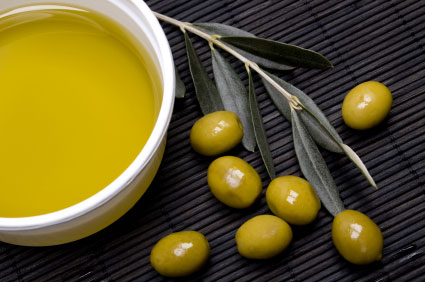
Olive Oil Croatia
Homer, that’s right, Homer, as in the guy who wrote Iliad and Odyssey, called it ‘liquid gold’. Spartans used to rub it all over themselves in order to look better, feel stronger and be sexier. It gave them that erotic ja ne sais qui they were looking for. Like lifting 400 pounds a day at the local gymnasium wasn’t enough. The very word “oil” is actually derived from the tree of this phenomenal fruit.
Can you imagine the pressure this put on the olive tree? It had an eternity of living up to its reputation. This flawless miracle of nature is not only one hell of a product, but one mass produced commodity with health benefits that make your head spin, if only to come back around again in complete disbelief of what you just learned. And that is where Croatia comes in, because that’s where the magic happens.
Olive & History
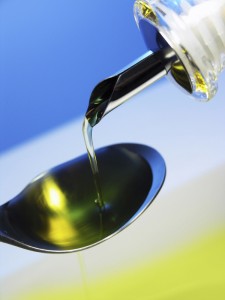 Obviously, I’m talking about olive oil. But, before we get deep, down and oily, lets have a gander at the tree and the fruit itself. Simply put, the olive tree seems to be out of this world. At least, that’s how resistant it is. In fact, it’s so resistant it remains a mystery how it hasn’t replaced entire forests by now. Its origins date way before Jesus Christ was even an idea to begin with. Opinions on where it came from exactly are like the nations that cultivate it – really divided. Some say it came from Africa, others say it evolved in Greece, several conclude the olives sprung to life in Asia Minor. Personally, I’m sticking with Africa as olive’s place of birth, since that’s where it all began anyway. From the northern tropical part of Africa it spread over to the Mediterranean, Crete, Israel, Syria, Asia Minor, Greece, Macedonia and of course – Croatia. When you think about it, it really makes sense why it settled on Mediterranean soil for one reason only – the climate is perfect for the cultivation of olives.
Obviously, I’m talking about olive oil. But, before we get deep, down and oily, lets have a gander at the tree and the fruit itself. Simply put, the olive tree seems to be out of this world. At least, that’s how resistant it is. In fact, it’s so resistant it remains a mystery how it hasn’t replaced entire forests by now. Its origins date way before Jesus Christ was even an idea to begin with. Opinions on where it came from exactly are like the nations that cultivate it – really divided. Some say it came from Africa, others say it evolved in Greece, several conclude the olives sprung to life in Asia Minor. Personally, I’m sticking with Africa as olive’s place of birth, since that’s where it all began anyway. From the northern tropical part of Africa it spread over to the Mediterranean, Crete, Israel, Syria, Asia Minor, Greece, Macedonia and of course – Croatia. When you think about it, it really makes sense why it settled on Mediterranean soil for one reason only – the climate is perfect for the cultivation of olives.
Then, we have the whole religious and mythological aura of it. Olives were always considered a symbol of abundance, glory and peace. Sometimes they served for the purpose of crowning the victors of a bloody game or a sport and at other gaming events they supported the burning of the Olympic flame. Speaking of combustion, here’s an interesting fact: researchers (as in scholars with budgets that would embarrass Libya, who randomly come up with really obscure but somehow useful conclusions) recently found out that the waste which remains from olive processing actually produces 2.5 more energy when lit on fire than regular wood. Can you imagine that? I love that. I love the fact that somebody managed to make something useful out of utter garbage. And, this is where we also queue Croatia because those crazy Croatians never throw anything away. However, the innovation itself came from the U.S. mainly because they are the only country in the universe that can patent a garbage combustion process.
As you can tell, the use of olives went a long way, to say the least. Hell, some olive leafs and branches were even found in Tutankhamen’s tomb. I think that’s a fair assumption on how eternal exactly they were meant to be. And I still haven’t even brushed on the medicinal part.
Olives have been heavily referred to in big religious movements such as Christianity, Islam and Judaism. Various scientists, researchers and agriculturists have different opinions on the exact age of the first olive tree and are throwing away numbers like they’re retelling a stock market crash. Basically, its like dinosaurs – if you haven’t been there all you can do is assume and we all know whose mother assumption is. Still, some experts pay little attention to actual evidence and assume that there are actual living olive trees, which date back to 7000 years B.C. Of course, there are reliable methods with which it is possible to give a rough estimate at the age of an olive tree.
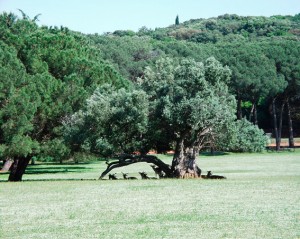 By using an age determining method, Croatia established itself as the proud owner of a 1600-year-old olive tree planted by no other than the Romans themselves. The tree is located on the Island of Brijuni, which is basically heaven on earth for tree huggers. This specific olive tree proves two things: how resistant an olive tree actually is and how redundant a degree from the University of Agriculture can become when it falls into the wrong hands. 30 years ago, a thunder struck and split this particular olive in half. The locals put their heads together and invited an agriculturalist to save the tree from certain death. This “expert” decided to use the most reasonable remedy possible – spill a load of concrete over the part where the tree was split in half. Sure, the tree survived, but not because of concrete but because it’s a resistant tree. 3 years ago the olive started to seriously deteriorate from within mainly because of the concrete that was poured over it. Luckily, an environmentalist came along and solved that problem. Today, more agricultural students are invited to the island to mess around with it and pick the fruit from it. The olive must be pissed.
By using an age determining method, Croatia established itself as the proud owner of a 1600-year-old olive tree planted by no other than the Romans themselves. The tree is located on the Island of Brijuni, which is basically heaven on earth for tree huggers. This specific olive tree proves two things: how resistant an olive tree actually is and how redundant a degree from the University of Agriculture can become when it falls into the wrong hands. 30 years ago, a thunder struck and split this particular olive in half. The locals put their heads together and invited an agriculturalist to save the tree from certain death. This “expert” decided to use the most reasonable remedy possible – spill a load of concrete over the part where the tree was split in half. Sure, the tree survived, but not because of concrete but because it’s a resistant tree. 3 years ago the olive started to seriously deteriorate from within mainly because of the concrete that was poured over it. Luckily, an environmentalist came along and solved that problem. Today, more agricultural students are invited to the island to mess around with it and pick the fruit from it. The olive must be pissed.
The Island of Brijuni, specifically the Big Brijun, is also quite relevant for the olive oil industry as among its Roman ruins lies hidden an old olive oil production facility that used stone presses for production of olive oil. In fact, the facility is so well preserved you can actually see the primitive ways of oil production quite clearly, without having to figure out which part went where.
95% of all olive oil production in the world comes from the Mediterranean. Croatia is one of those producers. Sure, the heavy hitters seem to be Spain, Italy and Greece; mainly because of their better positioning on the world market and because they’ve been cultivating it for centuries. However, Croatia is that little secret that hasn’t really been discovered yet. For instance, the EU has a law, which says that you can claim an oil to be Italian even though it has only 0.2% of actual Italian olive oil in it. Croatia, on the other hand, doesn’t take shit from anybody but its own people. That’s right, we make 100% hardcore virgin olive oil. In fact, our olive oil is so innocent it only goes through puberty after you taste it.
Cultivation:
As I mentioned earlier, the Olive tree is extremely hardy and can really survive several disasters in a row and its lifespan is often measured in centuries. It has a wide and deep root system that basically guarantees its survival without additional watering. It has been proven that the most ideal location to plant an olive is somewhere near the sea where other plants have difficulty surviving because of the salt saturated underground waters. Believe it or not, in terms of olive trees, hard living conditions sometimes guarantee a better chance of survival and production.
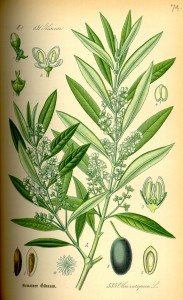 Here we go again with some really ambitious numbers. Like 50,000 years ago or something, the very first olive was paw-squeezed somewhere in the Eastern Mediterranean by a dinosaur that obviously had nothing better to do. In the centuries that followed, dinosaurs died out and presses had to be invented.
Here we go again with some really ambitious numbers. Like 50,000 years ago or something, the very first olive was paw-squeezed somewhere in the Eastern Mediterranean by a dinosaur that obviously had nothing better to do. In the centuries that followed, dinosaurs died out and presses had to be invented.
Today, there are literally thousands of cultivators of olive oil all over the world. However, the biggest producers are still concentrated in the Mediterranean. The “others” spread in California, South Africa and Australia, obviously going after the appropriate climate. In Croatia, the production is booming because it’s condensed into this small country that is inhabited by less than five million people. Here, everybody wants to be a good agriculturalist and the quality of the competition is so strong and intense that it makes you want to hand squeeze those little bastards on the 14th of October only to get that perfect quality ratio from your top olive tree. That’s how insane this olive business has become in Croatia. I remember last year we used to calculate the perfect time to pick the olives by using the Gauss curve in order to achieve the most appropriate time for picking olives in order to produce maximum quality to quantity ratio. Some people even go as far as spending the night in their olive field in order for the olives to tell them when is the right time to pick them.
Olive Harvest:
There’s certain magic in harvesting olives that cannot be described, its one of those “you had to be there” moments. Usually, its middle of October, you wake up around 4 am, pack food, drinks, tools and hit the fields. There are several ways to harvest the olives from the trees. One method is by using machines that shake the entire tree so the olives can drop down. However, that is just not an option in Istria because Istrians are people that use a hands-on approach. That’s why the most common way of harvesting olives in Istria is by taking the rakes and then calming the branches until the fruit falls of into oil net that you previously spread around the tree. That’s how we harvest them each year. Another method is wearing a sack around your neck while you stand on a ladder, hand pick the olives and place them in the basket. In all honesty, it is best if the fruit is not bruised because that also affects the quality of oil significantly. The latter method also includes sawing off branches that, believe it or not, only increases the yield for future harvests.
You spend the entire day in the sunny field, harvesting olives, filling up baskets and thinking why this hasn’t been declared a national sport. Around noon you prepare a barbecue for the entire crew, pull out a couple of bottles of some of the best wine in the world (which, inevitably, also comes from Istria and was probably produced in a nearby vineyard). Soon you find yourself really well fed and a bit dazed from the wine. But that only gives you a stronger boost and kicks your ass back in the field where you spend the rest of your day jumping from tree to tree like a monkey on vacation. It’s a tremendous feeling and you should definitely experience it. At the end of the day, your entire body aches but you go to bed with a feeling you grabbed that day by the olives and squeezed every bit out of it.
Tip of the day: remember, an older tree will not necessarily yield a high quality to quantity ratio because older trees only produce really well every couple of years and if you’re running a business, that’s not something you can actually rely on.
Istrian and Dalmatian Olive Oil:
Istria and Dalmatia are two different Croatian regions. As they differ in people, they also differ in products. Both are famous for excellent cuisine yet so very different. The same goes with olive oil. For instance, in Istria it’s pretty typical to see rows and rows of olive trees all perfectly lined up 2 meters away from one another yet growing in perfect harmony. In Dalmatia, however, it is quite common to find olives scattered all over the place in hard to reach areas where water resources are scarce. For that reason, people install huge water tanks next to olive fields but even that somehow fails to do the job, as the actual olives are still hard to reach. That’s why Dalmatia is filled with olive trees but not so much with tremendous olive oil. However, that’s not the only reason why Dalmatian Olive oil differs from Istrian. The Dalmatians use a different kind of press, which makes their oil not as ripe and bitter as Istrians. Istrians would say its “not as healthy” and they would probably be right. However, a hardcore Dalmatian will have difficulty adapting to Istrian olive oil, as the bitterness will be too much to handle. I’ve heard some Dalmatian dismissing the shit out of it in front of some really cool South Africans that praised it. It’s a matter of taste, habit, heritage, culture, press and harvest time.
You see, Dalmatians aim for more olive oil while Istrians are more prone to quality than quantity. Again, various reasons are at stake. Dalmatians don’t have as much olive fruit so they tend to make the most out of it. Istrians have a lot of olives and can afford to be “picky” and produce better quality of olive oil but in a lesser amount yet still be quite satisfied quantity-wise.
The Actual Production of Oil:
After harvesting which can last somewhere between one and two weeks, it’s time for production. However, you don’t wait two weeks and then go into production but as soon as your daily harvest is over you transport the olives to a nearby oil mil, presuming you don’t own one in the first place. Depending on your preference, the oil can be extracted either mechanically or chemically. Green olives, if picked to soon, can be too bitter while overripe olives will yield more oil but the quality will be significantly lower. That’s why we used the Gauss curve I mentioned above in order to calculate the perfect time of harvest so we can get the best quantity to quality ratio of olive oil.
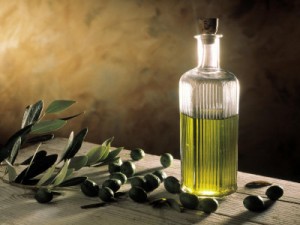 After you transport the olives to the oil mill of your choice, you’ve pretty much done all you can do. The oil is produced either the very same day or the day after, depending on the daily workload of the oil mil.
After you transport the olives to the oil mill of your choice, you’ve pretty much done all you can do. The oil is produced either the very same day or the day after, depending on the daily workload of the oil mil.
The olives are then put on some sort of an assembly line, which serves to separate the olives from possible tree leftovers such as leaves and small branches. After that, the fruit is ground into a paste via large millstones or in my case – steel drums. I don’t believe people use millstones in Istria anymore, while Dalmatia has yet to completely switch to the steel drums method of grinding the olives. The problem with millstones is that the paste usually stays under the stones for up to 40 minutes, which carries the risk of the oil oxidation, which in turn reduces the flavor of the oil. On the other hand, if the process is too short, the oil comes out in smaller quantities and has a less ripe taste.
When grinding is completed, the paste is placed on disks, which are stacked on top of each other in a column, after which it is placed into the press. Pressure is used to separate the liquid from the paste. We usually cold press the olive oil in order to get that extra virgin oil that can embarrass worldwide producers with some heavy heritage on their shoulders. Cold pressing means that the temperature of the entire production process never goes over 27 degrees Celsius. This ensures that all of the nutrients an olive can provide stay within the oil and are not wasted in terms of texture, taste and aroma. After the separation of this vegetable liquid from the paste, the liquid still contains a certain amount of water, which has to be removed in order to get the ‘liquid gold’ Homer was raving about in his works. In the past, people usually employed gravity to do the job for them. Obviously, this took a while so, inspired by washing machines; the process was replaced by centrifugation which went to great lengths to separate the oil from water as the centrifuge has one exit for water and the other one for oil. The thing with oil is that the more vegetal water it contains, the faster the degenerative process will occur. Mills should really be carefully chosen because in some small mills which don’t utilize the latest technology, the separation is not always up to par with recent standards and some watery leftovers containing organic particles can be found in the lowest layer of oil bottles.
In order to get virgin olive oil from the fruit, it is necessary to make sure production goes exclusively via mechanical means. The extra virgin olive oil has to satisfy specific chemical and organoleptic criteria (such as low free acidity).
The leftover paste (also referred to as pomace), as I explained earlier, can be put to good use. For instance, after processing and the original derivation of olive oil, there is still a small quantity of oil left in the paste, around 8% the most. However, oil mills can’t really extract that last bit of oil from them, that is done by the use of chemical solvents in specialized chemical plants. This process yields pomace oil.
Tip of the day: If you see a bottle of olive oil containing the words “first press” be aware because it doesn’t really mean a damn thing. Olive oil is always pressed once, there is no second press, it’s not a newspaper edition, its olive oil for gods sake.
Grades of Olive Oil:
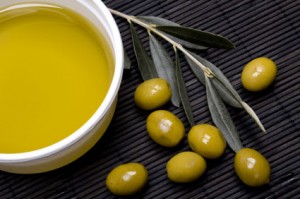 Extra-virgin olive oil is exclusively retrieved from the production of virgin oil. There are certain restraints this particular grade of oil has to adhere by. For instance, over 0.8% acidity is a big no-no in extra virgin country, but superior taste has been approved by many head nods in the Mediterranean area. Generally speaking, extra virgin olive oil accounts for about an average of 50% in top producing countries (Spain, Greece and Italy). Its usually appropriate as a fantastic replacement for salad dressings, soups, dipping purposes and stews. It’s a spice that extends life, that what the kids are calling it anyway.
Extra-virgin olive oil is exclusively retrieved from the production of virgin oil. There are certain restraints this particular grade of oil has to adhere by. For instance, over 0.8% acidity is a big no-no in extra virgin country, but superior taste has been approved by many head nods in the Mediterranean area. Generally speaking, extra virgin olive oil accounts for about an average of 50% in top producing countries (Spain, Greece and Italy). Its usually appropriate as a fantastic replacement for salad dressings, soups, dipping purposes and stews. It’s a spice that extends life, that what the kids are calling it anyway.
Virgin olive oil derives its name, purpose and vitality from the production of virgin oil. Essentially, its self explanatory yet the acidity level must not exceed 2% and is considered to be excellent in taste.
Pure olive oil – the name can be a bit misleading as “pure” is basically only a step down from virgin olive oil. Relatively speaking, its difficult enough to top something that has virgin in its description. Obviously, its even harder to downgrade that type of oil and still give it a decent grade. Therefore, pure olive oil is a blend of virgin and refined olive oil.
Earlier, we talked about olive pomace oil. Little has changed since then. Its basically refined olive oil blended with virgin olive oil. Again, it may be consumed and is often of industrial nature, meaning it can be found in Croatian stores if it was produced on a mass scale from one of the major producers. They don’t really care much about quality as they do about quantity. That’s why their oils usually have no taste or taste “neutral”. It’s not really popular among local connoisseurs either, but it does have some similarity in terms of health benefits. Because of its high smoke point it is generally used in restaurant.
Lampante oil is still olive oil yet it only vaguely resembles it. Because of this, lampante does what its name suggests – provides fire for the oil burning lamps. Refined olive oil is what happens when an oil hits that all time low. When there is nothing left to squeeze, it’s time to refine the living daylights out of it. Still, it has a free acidity of no more than 0.3% but that’s barely a plus in this case. Basically, refined olive oil is that last choice on the lowest shelf in the store. Its retrieved by the use of chemical solvents and charcoal in collaboration with really poor quality olive oil.
Varieties of Olive Oil:
I’m going to talk about varieties of olive oil, which are specific for the Istrian region of Croatia as that’s where the best olive oil comes from anyway. These are varieties produced from Olea BB (http://www.oleabb.hr/), one of the best producers of olive oil in the world with a permanent residency in Istria, Croatia. Again, depending on the occasion, the following varieties have soothed my taste buds in ways that should basically be illegal.
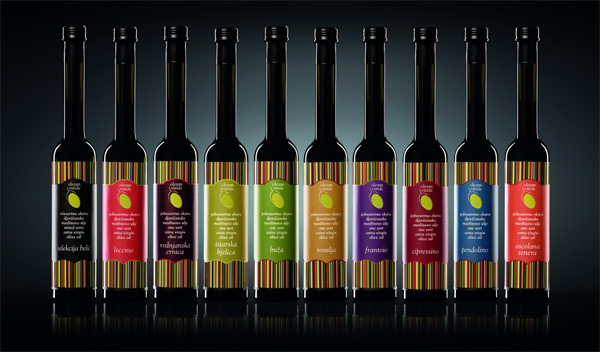
Leccino: This rustic variety, spread all over the globe, originated from Tuscany. The plant itself is vigorous with a capital v. The fruit itself is purple black. To be perfectly clear, its dark green when the time is right for harvesting. You can find it among table olives, either black or half ripe. It has a vivid fruit aroma accompanied by a somewhat buttery flavor. It’s among the mildest of olive oils.
Frantoio: With an aroma reminiscent of herbs and apples, the taste is overcome with almonds and a spicy overtone. The oil is perfect for a variety of foods such as meats, vegetables, poultry and serves excellent as a mega nice salad dressing.
Ascolana Tenera: One of the most valuable table varieties, it is widespread in all areas where olives are grown. It is very resistant to low temperatures and extremely fruity in flavor and very rich in oil. The quality of this particular variety is outstanding.
Buža: This is one of the oldest Istrian sorts, a variety of olive oil that has always been held in high regard. It consists out of several flavors followed by an intense fruity scent. It is reminiscent of artichokes, aromatic herbs and apples. All these give it a certain amount of bitterness and spiciness. It goes down quite well with sushi, salmon and tuna.
Rosulja: It is golden and green in color, intense fruity smell with a hint of olive in the background. Spicyness and bitterness is strong in this one, eventually overflowing into a strong paprika flavor. Goes down well with turkey, chicken and red meat in general, as well as fresh cheese and various pasta dishes.
Vodnjanska Crnica: An old Istrian sort, in mega high quality. It is quite mild in bitterness and spicyness, yet over flown with a fruity flavor. Excellent for fishy occasions, octopus and sea food in general. It is definitely not an obtrusive type of oil, but a variety that blends in well even with honey, pepper and cheesecakes.
Cipressino: This is an absolute novelty on the Croatian market. It is characterized by an intensive and fruity taste with traces of almonds, dry tomatoes with a balance relationship between bitterness and spiciness. Works great with raw vegetables and fruitcakes.
Combining Oil w/ Various Foods:
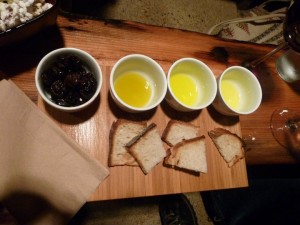 Countries surrounding the Mediterranean Sea are considered to be the most frequent consumers of olive oil. In example, in Greece, 2 liters of olive oil per person is being consumed on a monthly basis – that’s without rubbing it all over themselves. The flavor of olive oil really depends on how you apply it. The flavor will remain intact if served over a salad, for dipping or cold foods in general. If the oil is compromised by heat, then a change in taste is inevitable and can reduce the intensity noticeably. Basically, the higher the temperature, the more a person should consider using refined olive oils because when the extra virgin olive oil is heated over 170 degrees Celsius, it sort of diminishes the unrefined particles.
Countries surrounding the Mediterranean Sea are considered to be the most frequent consumers of olive oil. In example, in Greece, 2 liters of olive oil per person is being consumed on a monthly basis – that’s without rubbing it all over themselves. The flavor of olive oil really depends on how you apply it. The flavor will remain intact if served over a salad, for dipping or cold foods in general. If the oil is compromised by heat, then a change in taste is inevitable and can reduce the intensity noticeably. Basically, the higher the temperature, the more a person should consider using refined olive oils because when the extra virgin olive oil is heated over 170 degrees Celsius, it sort of diminishes the unrefined particles.
Choosing olive oil is a task up to all of your senses. It could be compared to wine tasting because oils differ from each other in various ways, and it has become an art in knowing which variety of olive oil goes best with certain types of food or drink. I.e. if you are one of those people who prefer more tannin in their wine, then bitter olive oil is just the thing for you. Along with that, the freshness is a tremendous factor. The difference between a day old olive oil and the one that’s been squeezed a year ago is immense. Don’t get me wrong, the year old is still a challenge for your taste buds but contains less of that olive bouquet that you had in the younger variety.
Medicinal Use:
This is where we draw the line. Olive oil holds a wide variety of antioxidants which are specific to olive oil only. It is considered to have a protective effect for the digestive tract, malignant tumors in breasts and prostate and reduces the risk of heart disease. It has been proven that it reduces the risk of coronary heart disease as it is rich in mono saturated fats. It raises the level of good cholesterol (HDL) while at the same time lowering the level of bad cholesterol (LDL).
Depending on the usage of olive oil, it has mild laxative properties and can serve as a prevention measure for peptic ulcer or gastric cancer. Recently it has been proven that olive oil can reduce oxidative damate done to DNA, which ultimately can prevent cancer.
Note: Thanks to Moreno for his insight on Croatian olive oil


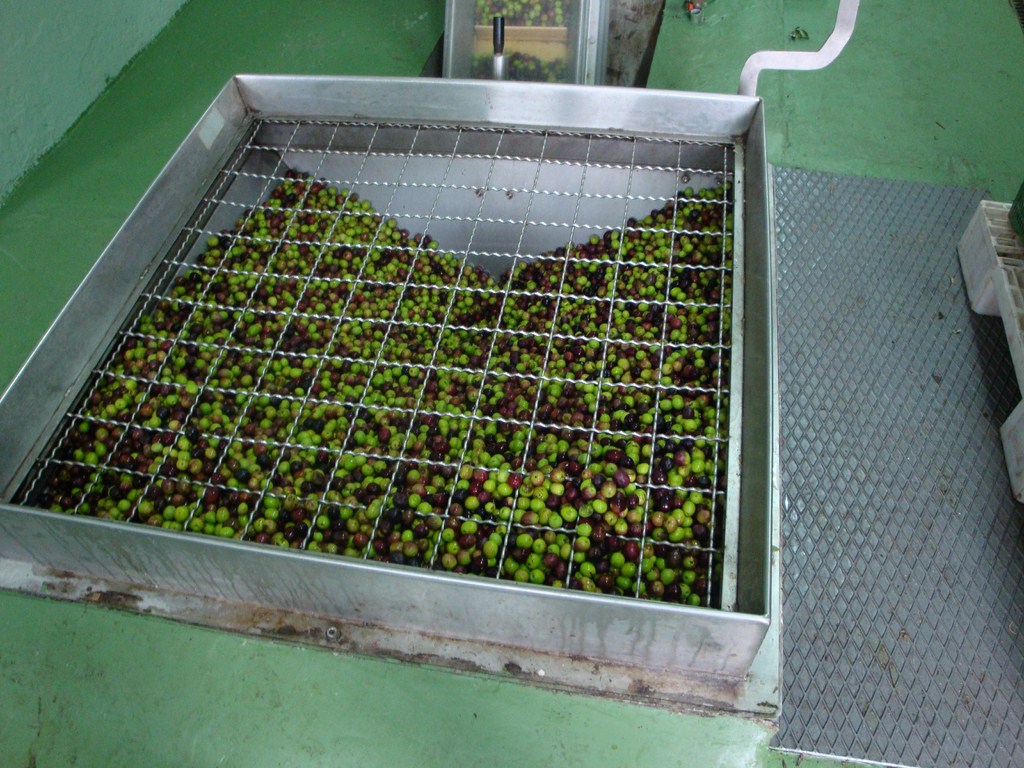
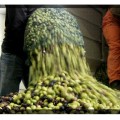
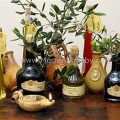
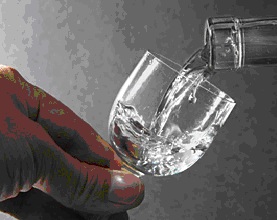



we are intersted to import olive oil from Carotia please tell us how we can import
Hi Arun,
i really have no idea how you can import Olive oil from here?
Kindest regards, Morten
Hi Arun,
how much are you planing to import, to where and what quality are you looking for?
Reni
Hello Arun,
If you wish to import high quality extra virgin olive oil, from Croatia, we can supply you.
Kindly regards,
Roman
zizanj.doo@gmail.com
http://www.zizanj.com
Hi Reni
Do you know if there is an export duty levied by Hrvastka when exporting Croatian olive oil,how much is it, and what effect will joining the EU have on 31.07.13?
Some producers even seem to suggest there is an export bann prohibiting exporting olive oil & say the only way to do it is to collect yourself from the local producer by car?
Gary
I suggest that before you write something about the olive oil next time, you educate yourself a little bit more. The part about the Dalmatians is exclusive. Just because 30% of Dalmatian growers harvest their olives late in the season doesn’t mean that all Dalmatian olive oil is of lower quallity. That means that 30% of Dalmatian olive growers are old people accustomed to the old way of processing. Next, because the Dalmatian olive trees are scattered, and have less water means that the olive is of better quality, because the olives must be hand picked, and with less water the olive tree produces more antioxidants in the olive itself so they wouldn’t fall off the tree. Moreover, if you want to explaine the process of extraction, you should work in the oil mill for couple of years to learn that. Why should the mills be carefully chosen, and for the love of god, HOW? The story about vegetable waters is partially trough, because that last remaining water (which can’t be extracted because of seasonal influences) the oil must settle on exact temperature when the last part of processing should occur. By promoting ISTRIAN olive oil, I suggest that you leave alone other regions in your expertise, or majority of people in DALMATIA wich are good, hardworking and high quality producers, simply do not exist. The part about the waste (husk) is completely not trough. Croatians are throwing the husk away. Some illegally
Hi Oliver, thanks for yuor input.
Brgds,
Morten
You’re welcome. If you travel to Dalmatia, please contact me. It will be pleasure for me to host you and give my best to present the Dalmatian olive oil production since the ancient times till today.
Sorry for technical mistakes. I have some trouble with software.
Hi Oliver, well i live in Dalmatia 🙂
Small world. Perfect. I live in Split. Next week will be fine. Maybe Ivica can join us? What do you say, Ivica?
Mr Morten, I apologize to the tone in my first post, your ignorance is unintentional, I strayed to your website and thought you were from Istria.
I googled you, and it looks like we live in the same town.
Hi Oliver, no worries. usually i try to approve comments once a day, but as a run quite a few websites i do not always manage.
And yes i also live in Split.
Brgds, Morten
Dear Morten, you do not know basic information about the Croatian olive oil sector. For example, Dalmatia has 70-80% of the total number of olive trees in Croatia.
Under the article posted on your web page would be correct to write: sponsored by …..
Hi Ivica,
i would be more happy to publish and artikle about the Dalmatian olive oil, feel free to make one for me.
PS: the article will be translated to German, Italian and Danish also.
Brgds,
Morten
Well, it looks like we owe you an article.
Sounds good, thanks!
Hello,
Although these comments are a couple of years old. I am hoping I will receive a response. I would love the opportunity to connect with either Oliver or morten. I’m looking at the possibility of importing olive oil from Croatia. I fell in love with Croatia back on a family vacation in 2013 and am looking at various Croatian products to bring home to the USA. I will be in Split in June and would love an opportunity to meet either of you. Thanks! Interesting read and feedback comments.
Hi Eliza,
sorry for the very late reply.
Anyway in relation to Olive oil, i suggest you contact Robi, from Ventula travel he knows a lot about that stuff, you can find his contact details here at his website https://ventula-travel.com/
Kindest regards
Morten
Hi Morten. Do you know what is “dišpet”?
Hi Oliver
not 100% sure.